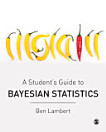Introduction to Sociology
ഈ ഇ-ബുക്കിനെക്കുറിച്ച്
This text presents a complete sociological toolkit, guiding students in the art of asking good sociological questions, devising a sophisticated theory and developing methodologies to observe social phenomena. The chapters of this book build cumulatively to equip students with the tools to quickly understand any new sociological topic or contemporary social problem.
The textbook also applies the sociological toolkit to selected key sociological issues, showing how specific sociological topics can be easily investigated and understood using this approach. Taking a global and comparative perspective, the book covers a rich diversity of sociological topics and social problems, such as crime, immigration, race and ethnicity, media, education, family, organizations, gender, poverty, modernization and religion.
The book presents a range of helpful pedagogical features throughout, such as:
- Chapter overview and learning goals summaries at the start of every chapter;
- Thinking like a sociologist boxes, encouraging students to reflect critically on learning points;
- Principle boxes, summarizing key sociological principles;
- Theory schema boxes, presenting sociological theories in a clear, understandable manner;
- Stylized facts highlighting key empirical findings and patterns;
- Key concepts and summary sections at the end of every chapter; and
- Companion website providing additional material for every chapter for both instructors and students, including PowerPoint lecture notes, discussion questions and answers, multiple-choice questions, further reading and a full glossary of terms.
This clear and accessible text is essential reading for students taking introductory courses in sociology. It will also be useful for undergraduate and graduate courses in other social science disciplines, such as psychology, economics, human geography, demography, communication studies, education sciences, political science and criminology.
രചയിതാവിനെ കുറിച്ച്
Frank van Tubergen is Professor of Sociology at Utrecht University, where he teaches introduction to sociology. His current work is focused on social networks, immigration and religion.




